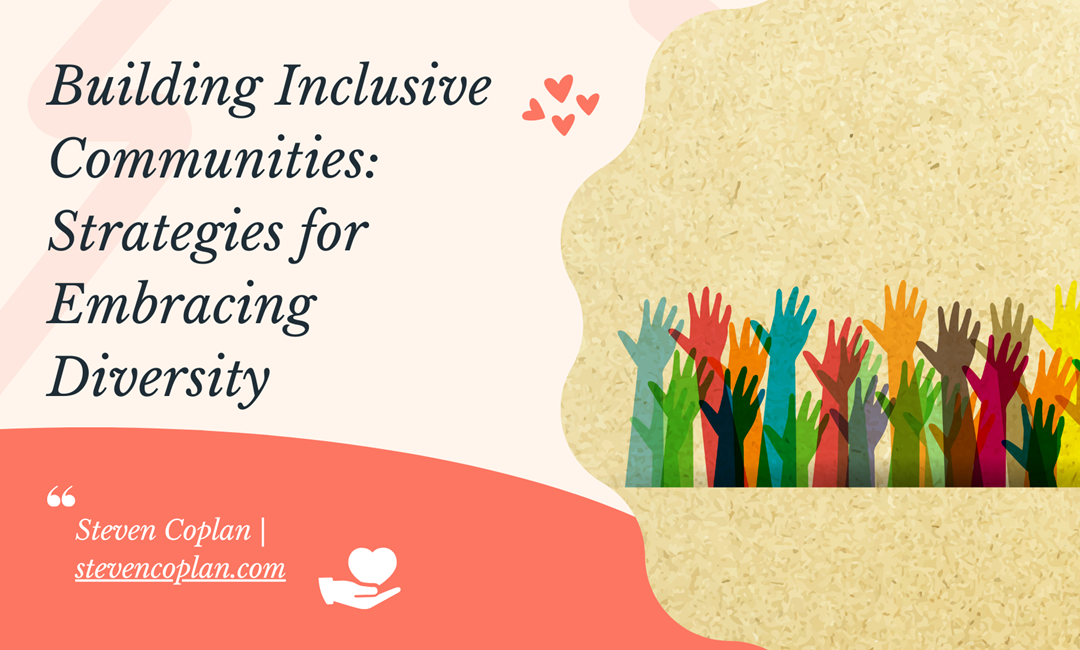Creating inclusive communities where diversity is celebrated, and everyone feels valued is essential for fostering a sense of belonging and unity. Inclusivity strengthens social cohesion, encourages mutual respect, and ensures that all community members have the opportunity to contribute and thrive. Here are several strategies for embracing diversity and building inclusive communities.
Promote Open Dialogue
Encouraging open dialogue about diversity and inclusion is a foundational step. Create spaces where community members can share their experiences, perspectives, and ideas without fear of judgment. Organize forums, discussion groups, and town hall meetings that focus on topics related to diversity, equity, and inclusion. By facilitating these conversations, communities can raise awareness, dispel myths, and build mutual understanding.
Educate and Raise Awareness
Education is key to fostering an inclusive community. Offer workshops, training sessions, and educational materials that highlight the importance of diversity and teach skills for inclusive behavior. Topics can include cultural competency, unconscious bias, and anti-discrimination practices. Schools, community centers, and local organizations can partner to deliver these educational initiatives, ensuring they reach a wide audience.
Celebrate Cultural Diversity
Celebrate the rich tapestry of cultures within your community by organizing cultural festivals, heritage days, and other events that showcase diverse traditions, foods, music, and arts. These events provide an opportunity for community members to learn about and appreciate different cultures, fostering a sense of pride and belonging among diverse groups.
Implement Inclusive Policies
Adopting inclusive policies and practices within local government, businesses, and organizations is crucial. Ensure that policies explicitly promote diversity and inclusion, and address any barriers that might prevent certain groups from fully participating in community life. This might include anti-discrimination policies, equal access to services, and representation of diverse groups in decision-making processes.
Foster Inclusive Leadership
Leadership plays a vital role in shaping the culture of inclusivity within a community. Encourage the involvement of diverse individuals in leadership roles across local government, organizations, and community groups. Inclusive leadership ensures that diverse voices are heard and considered in decision-making processes, leading to more equitable and representative outcomes.
Create Accessible Spaces
Physical and social accessibility is fundamental to inclusivity. Ensure that public spaces, facilities, and community events are accessible to people of all abilities. This might involve installing ramps, providing sign language interpreters, or offering materials in multiple languages. By removing barriers to participation, communities can ensure that everyone has the opportunity to engage fully.
Support Community Groups
Support and collaborate with community groups that represent diverse populations. These groups can provide valuable insights and resources, helping to shape initiatives that address the specific needs and concerns of different communities. Partnering with these groups can also enhance outreach efforts, ensuring that initiatives are inclusive and widely supported.
Encourage Volunteerism
Promote volunteer opportunities that bring together people from diverse backgrounds to work towards common goals. Volunteerism fosters collaboration, builds relationships, and breaks down stereotypes. Projects such as community clean-ups, tutoring programs, and neighborhood improvement initiatives can unite community members in meaningful ways.
Monitor and Evaluate Progress
Regularly monitor and evaluate the progress of diversity and inclusion initiatives. Gather feedback from community members and use data to assess the effectiveness of programs and policies. Adjust strategies as needed to ensure continuous improvement and responsiveness to the evolving needs of the community.
Conclusion
Building inclusive communities requires a proactive, multifaceted approach that embraces diversity and fosters mutual respect. By promoting open dialogue, educating and raising awareness, celebrating cultural diversity, implementing inclusive policies, fostering inclusive leadership, creating accessible spaces, supporting community groups, encouraging volunteerism, and monitoring progress, communities can create environments where everyone feels valued and included. These efforts not only enhance the quality of life for all residents but also strengthen the social fabric and resilience of the community as a whole.

